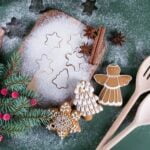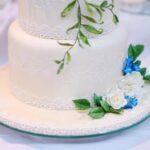Are you looking to add a personal touch to your cakes with unique decorations? In this article, we will explore the art of creating stunning cake decorations using royal icing. From basic tools and ingredients to advanced techniques, we will guide you through the process of making beautiful designs that will impress your friends and family.
Royal icing is a versatile decorating medium that can be used to create intricate details and designs on cakes. It is made from a simple mixture of powdered sugar, egg whites, and sometimes lemon juice or cream of tartar. The keyword “how to make cake decorations from royal icing” emphasizes the importance of understanding the basics before diving into the world of royal icing decorations.
When working with royal icing, it is essential to have the right tools and ingredients on hand. From piping bags and tips to food coloring gels and parchment paper, having these items ready will make the decorating process much smoother. In the following sections, we will provide a step-by-step guide on how to make royal icing for cake decorations, as well as different techniques for piping intricate designs onto your cakes.
Basic Tools and Ingredients Needed for Working With Royal Icing
Royal icing is a versatile and popular medium for creating stunning cake decorations. Before you start working with royal icing, it is important to have the right tools and ingredients on hand to ensure successful results.
Tools Needed
To begin decorating cakes with royal icing, you will need a few essential tools. These include piping bags, piping tips (such as round tips, star tips, and leaf tips), offset spatulas for smoothing icing, a turntable for easier decorating, parchment paper or silicone mats for practicing designs, and a small palette knife for mixing colors.
Ingredients Needed
The basic ingredients needed to make royal icing are simple: egg whites (or meringue powder as a substitute), powdered sugar, and water. Some recipes call for a touch of lemon juice or cream of tartar to stabilize the icing. It is important to use fresh egg whites or meringue powder from reputable sources to ensure food safety in your decorations.
Additional Supplies
In addition to the essential tools and ingredients, having some additional supplies can make working with royal icing more efficient. A bowl scraper can help clean out mixing bowls easily, gel food coloring can provide vibrant hues without altering the consistency of the icing too much, and disposable piping bags can save time on cleanup.
By ensuring you have all the necessary tools and ingredients before starting your royal icing decorations, you can set yourself up for success in creating beautiful and intricate designs on your cakes. Stay tuned for the step-by-step guide on how to make royal icing for cake decorations in the next section.
Step-by-Step Guide on How to Make Royal Icing for Cake Decorations
Royal icing is a versatile and popular choice for decorating cakes due to its smooth finish and ability to hold intricate designs. Making your own royal icing at home is surprisingly simple and only requires a few basic ingredients. Here is a step-by-step guide on how to make royal icing for cake decorations.
Ingredients
To make royal icing, you will need powdered sugar (also known as confectioner’s sugar), meringue powder, water, and flavoring extract (such as vanilla or almond). These ingredients can be easily found at most grocery stores or specialty baking shops.
Instructions
- In a mixing bowl, combine 4 cups of powdered sugar with 3 tablespoons of meringue powder.
- Add in 6-8 tablespoons of water, depending on the desired consistency of your royal icing.
- Mix on low speed until the ingredients are combined, then increase the speed to high and continue mixing for about 5-7 minutes until stiff peaks form.
- Add in a teaspoon of flavoring extract for taste and mix until fully incorporated.
Consistency
The consistency of your royal icing is crucial for successful cake decorating. For outlining designs or creating intricate details, a thicker consistency is ideal. If you need flooding consistency for filling in larger areas, simply add more water to thin out the mixture. Experiment with different consistencies to find what works best for your specific project.
By following these simple steps, you can easily whip up a batch of royal icing at home to create stunning decorations for your cakes. Practice makes perfect when it comes to working with royal icing, so don’t be afraid to experiment with different techniques and designs to elevate your cake decorating skills.
Different Techniques for Piping Royal Icing Decorations Onto Cakes
Royal icing is a popular choice for cake decorators due to its versatility and ability to create intricate designs. One of the key techniques in working with royal icing is piping, which allows decorators to create beautiful and detailed decorations on cakes. Piping involves using a piping bag or squeeze bottle to apply the icing in various shapes and patterns.
To start piping royal icing decorations onto cakes, you will need a few essential tools. These include piping bags or squeeze bottles, piping tips in different sizes and shapes, a coupler to easily switch between tips, and practice sheets or parchment paper for testing out designs before applying them to the cake. Additionally, having a steady hand and good control over the pressure applied to the piping bag is crucial for achieving clean and precise lines.
When it comes to actually piping the royal icing onto the cake, there are several different techniques you can use. Some common ones include outlining, flooding, rosettes, swirls, dots, and writing. Outlining involves creating a border for your design before filling it in with more icing (flooding).
Rosettes are created by applying pressure while rotating the tip in a circle, while swirls can be achieved by moving the piping bag in a circular motion as you pipe. Dots are simple yet effective decorations that can be used to add texture or fill empty spaces on the cake, while writing allows you to personalize your cake with messages or names.
| Piping Technique | Description |
|---|---|
| Outlining | Create borders for designs before filling them in. |
| Rosettes | Create circular designs by rotating tip while applying pressure. |
| Swirls | Make swirling designs by moving piping bag in circular motion. |
Mastering these different piping techniques with royal icing can open up endless possibilities for decorating cakes and desserts creatively. With practice and patience, you can enhance your cake designs with intricate details and personalized touches that will impress your friends and family alike. Experimenting with various shapes, colors, and patterns will allow you to showcase your creativity and unique style when it comes to making cake decorations from royal icing.
Tips for Coloring Royal Icing to Achieve Vibrant and Unique Decorations
When it comes to creating beautiful cake decorations with royal icing, coloring plays a crucial role in achieving vibrant and unique designs. The color palette you choose can make all the difference in the overall look of your creations. Here are some tips on how to effectively color royal icing for your cake decorations:
- Start with white royal icing: To achieve the most vibrant colors, it is essential to start with a base of white royal icing. This will allow the colors to appear true to their shade without any interference from the natural tint of the icing.
- Use gel food coloring: Gel food coloring is preferred over liquid food coloring when working with royal icing. Gel colors are more concentrated, which means you need less to achieve intense hues without altering the consistency of the icing.
- Experiment with different color combinations: Don’t be afraid to mix different gel colors together to create custom shades for your decorations. By mixing primary colors, you can create a wide range of tones and tints for your designs.
Achieving the perfect color for your royal icing decorations can take some practice, but with a little patience and experimentation, you can create stunning cakes that will wow your friends and family. Remember, the key is to have fun and let your creativity shine through in every detail.
- Store excess colored royal icing properly: If you have leftover colored royal icing, make sure to store it in an airtight container or covered bowl to prevent it from drying out or forming a crust. You can also refrigerate it for longer storage.
- Adjusting consistency when adding color: Keep in mind that adding gel food coloring may slightly alter the consistency of your royal icing. If the icing becomes too thick after coloring, you can add a few drops of water at a time until you reach your desired piping consistency.
Advanced Techniques for Creating Intricate Designs With Royal Icing
Royal icing is not only great for basic cake decorations, but it also allows for intricate and detailed designs that can truly elevate your cakes to the next level. With the right techniques and practice, you can create stunning patterns and shapes that will impress your friends and family. Here are some advanced techniques for creating intricate designs with royal icing:
- Needle Tool: Use a needle tool to create fine lines and intricate details on your cakes. This tool allows for precision and control when piping royal icing onto your cake.
- Lace Designs: Create delicate lace designs on your cakes using royal icing. By piping thin lines in a lace pattern, you can achieve a beautiful and elegant look that will wow your guests.
- Filigree Work: Filigree designs involve creating elaborate and intricate patterns with royal icing. Practice piping swirls, loops, and other decorative elements to add a touch of sophistication to your cake decorations.
For those looking to take their cake decorating skills to the next level, mastering these advanced techniques with royal icing can open up a world of possibilities. Experiment with different designs, patterns, and colors to create unique decorations that reflect your personal style and creativity.
Remember to be patient and practice regularly to improve your piping skills. With dedication and perseverance, you can master the art of creating intricate designs with royal icing and take your cake decorating abilities to new heights. Embrace the challenge, have fun with it, and enjoy the process of bringing your creative visions to life through beautifully crafted royal icing decorations.
Common Mistakes to Avoid When Working With Royal Icing for Cake Decorations
Royal icing is a versatile and widely-used medium for creating intricate and beautiful cake decorations. However, there are common mistakes that many beginners make when working with royal icing for cake decorating. By being aware of these pitfalls, you can improve your skills and create stunning creations without the frustration of errors.
One common mistake to avoid when working with royal icing is not getting the right consistency. Royal icing should be thick enough to hold its shape when piped but also thin enough to flow smoothly from the piping bag.
To achieve the perfect consistency, it is important to add water or powdered sugar gradually while mixing until you reach the desired texture. Testing a small amount on a practice surface before decorating your cake can help ensure you have the right consistency.
Another mistake to steer clear of is overmixing the royal icing. Overmixing can create air bubbles in the icing, which can result in a rough texture when piped onto cakes. To prevent this, mix the royal icing on low speed and avoid over-beating it. Additionally, make sure to cover any unused royal icing with plastic wrap directly touching the surface to prevent it from drying out too quickly.
It is also essential to avoid rushing the drying process of royal icing decorations. Allowing sufficient time for the decorations to dry completely before handling them will help prevent smudging or ruining your hard work. Depending on the size and thickness of your decorations, it may take several hours or even overnight for them to fully set. Patience in this step will pay off in achieving professional-looking results.
| Common Mistakes | How to Avoid |
|---|---|
| Not getting the right consistency | Add water or powdered sugar gradually; test on practice surface |
| Overmixing the royal icing | Mix on low speed; cover unused icing properly |
| Rushing the drying process of decorations | Allow sufficient time for decorations to dry completely |
Creative Ideas for Using Royal Icing Decorations to Elevate Your Cake Designs
Royal icing decorations can truly take your cake designs to the next level, adding a touch of elegance and creativity. There are countless ways to incorporate these delicate and intricate decorations into your cakes, whether you’re aiming for a simple and elegant look or a more elaborate and eye-catching design. Here are some creative ideas to inspire you on how to make cake decorations from royal icing.
One popular way to use royal icing decorations is as borders or edges on your cake tiers. You can create beautiful scalloped edges, lace-like designs, or even simple dots and lines to add a touch of whimsy. These borders not only enhance the overall look of the cake but also help define each tier, creating a cohesive and polished finish.
Another creative idea for using royal icing decorations is to create three-dimensional elements that can be placed strategically on the cake. For example, you can make delicate flowers, leaves, or even miniature figurines out of royal icing to adorn your cake. These intricate decorations will not only impress your guests but also add depth and dimension to your design.
Lastly, consider using royal icing decorations as accents on specific areas of the cake, such as at the base of each tier, around the cake stand, or cascading down the sides. These accents can tie together different elements of your design and draw attention to key features of the cake. Experiment with different shapes, colors, and textures to create a unique and visually stunning masterpiece that showcases your talent in working with royal icing.
Conclusion
In conclusion, royal icing is a versatile and essential tool for any baker looking to elevate their cake decorations. Its smooth consistency and ability to harden make it perfect for creating intricate designs and beautiful accents on cakes. By mastering the art of working with royal icing, you can take your cake decorating skills to the next level and impress your friends, family, and clients.
From basic tools like piping bags to essential ingredients like powdered sugar and meringue powder, the process of making royal icing may seem simple but requires precision and practice. Following a step-by-step guide will help you achieve the perfect consistency for piping intricate designs onto your cakes. Experimenting with different techniques such as flooding, outlining, and stenciling will allow you to create a wide range of decorations to suit any occasion.
Remember, practice makes perfect when it comes to working with royal icing. Don’t be afraid to get creative and try new techniques to achieve unique and vibrant decorations for your cakes. Whether you’re a beginner or an experienced baker, royal icing offers endless possibilities for adding an extra touch of elegance and charm to your sweet creations. So go ahead, unleash your creativity, and make your cakes stand out with stunning royal icing decorations.
Frequently Asked Questions
Can You Use Royal Icing to Make Cake Decorations?
Royal icing can indeed be used to make cake decorations. It is a versatile and sturdy icing that dries hard, making it perfect for creating intricate designs like flowers, borders, and even 3D figures. Its smooth texture allows for precise details on cakes.
How Do You Harden Royal Icing on a Cake?
To harden royal icing on a cake, you simply need to let it air dry at room temperature. Depending on the thickness of the icing and the intricacy of the design, it can take anywhere from a few hours to overnight to fully set. Avoid touching or moving the cake during this process to prevent any damage to the decorations.
What Do You Make Royal Icing Transfers On?
Royal icing transfers are often made on wax paper or parchment paper before being placed onto cakes or cupcakes. These transfers can be created in advance, allowing them to dry thoroughly before being applied to the final dessert. They are an excellent way to add detailed decorations without having to work directly on the cake itself.

Welcome to my blog about home and family. This blog is a place where I will share my thoughts, ideas, and experiences related to these important topics. I am a stay-at-home mom with two young children. I hope you enjoy reading it! and may find some helpful tips and ideas that will make your home and family life even better!





